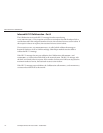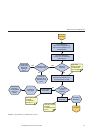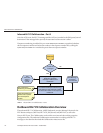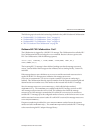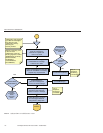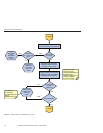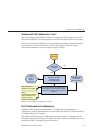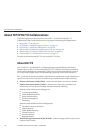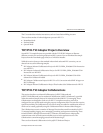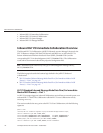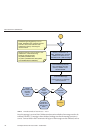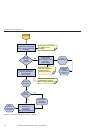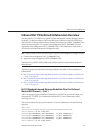
About TCP/IP HL7 V3 Collaborations
The following topics provide a brief overview of HL7 V3, and describe the HL7 V3
Collaborations and provide instructions on copying and customizing the Collaborations:
■
“About HL7 V3” on page 120
■
“TCP/IP HL7 V3 Adapter Projects Overview” on page 121
■
“TCP/IP HL7 V3 Adapter Collaborations” on page 121
■
“Inbound HL7 V3 Immediate Collaboration Overview” on page 122
■
“Inbound HL7 V3 Deferred Collaboration Overview” on page 127
■
“Outbound HL7 V3 Collaboration Overview” on page 133
For more information about HL7 V3, refer to the HL7 V3 Guide.
About HL7 V3
HL7 V3, like V2.x, is a standard for exchanging messages among healthcare information
systems. However, HL7 V3 is not compatible with V2. V3 denes a more fully-specied data
model with less exibility for customization. This presents a tighter standard that is easier to
use, and provides a higher level of formal modeling, complexity, and internal consistency.
HL7 V3 is based on information models, which dene the specications of sets of data that are
specic to one area of interest. There are dierent types of information models, including:
■
Reference Information Model (RIM) – Denes the information content for a domain.
■
Domain Information Model (D-MIM) – Denes a set of class clones, attributes, and
relationships, and is a subset of the RIM. Domains include the following:
Domains under Administrative Management:
■
Accounting and Billing
■
Claims & Reimbursements
■
Patient Administration
■
Personnel Management
■
Scheduling
Domains under Health and Clinical Management:
■
Clinical Document Architecture
■
Medical Records
■
Public Health Reporting
■
Clinical Genomics
■
Specimen Domain
■
Regulated Studies
■
Rened Message Information Model (R-MIM) – Denes message-specic content, and is
a subset of the D-MIM).
AboutTCP/IPHL7V3Collaborations
SunAdapterforTCP/IPHL7User's Guide • October2009120



